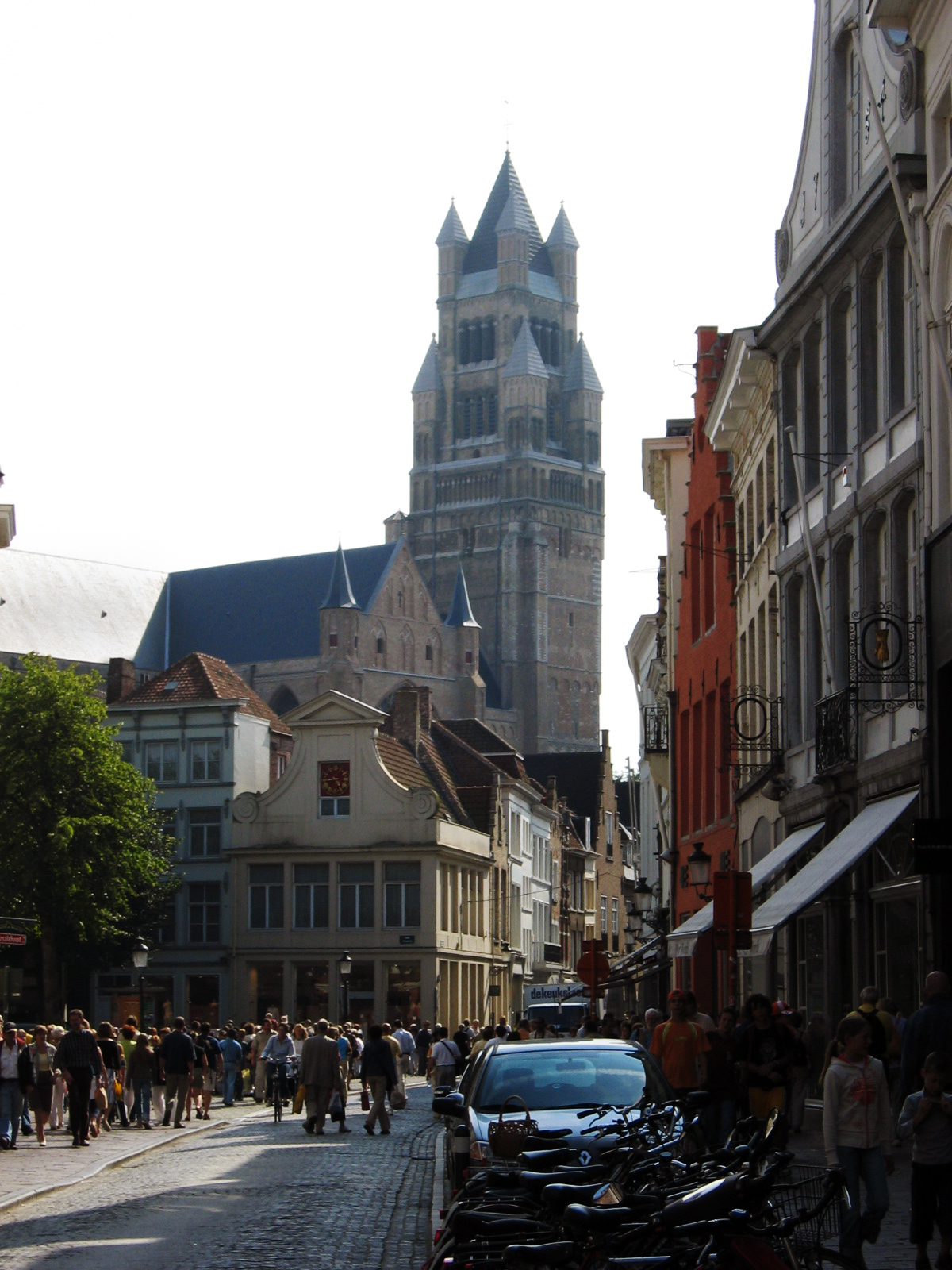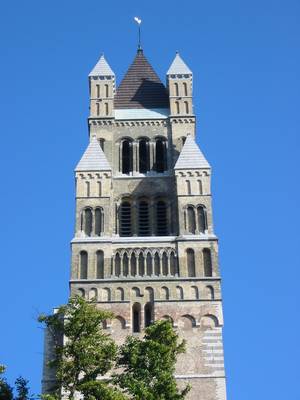Cathedral Of Bruges on:
[Wikipedia]
[Google]
[Amazon]

 The Saint-Salvator Cathedral is the
The Saint-Salvator Cathedral is the
 The organ of the cathedral was originally built by
The organ of the cathedral was originally built by
Article about the cathedral which appears to be source for this page
collections saint-salvator-cathedral
{{Authority control Roman Catholic churches in Bruges Museums in Bruges Bell towers in Belgium Brick Gothic Gothic architecture in Belgium Roman Catholic cathedrals in Belgium
cathedral
A cathedral is a church that contains the ''cathedra'' () of a bishop, thus serving as the central church of a diocese, conference, or episcopate. Churches with the function of "cathedral" are usually specific to those Christian denominatio ...
of Bruges
Bruges ( , nl, Brugge ) is the capital and largest city
A city is a human settlement of notable size.Goodall, B. (1987) ''The Penguin Dictionary of Human Geography''. London: Penguin.Kuper, A. and Kuper, J., eds (1996) ''The Social Scienc ...
, Flanders
Flanders (, ; Dutch: ''Vlaanderen'' ) is the Flemish-speaking northern portion of Belgium and one of the communities, regions and language areas of Belgium. However, there are several overlapping definitions, including ones related to cultu ...
, in present-day Belgium
Belgium, ; french: Belgique ; german: Belgien officially the Kingdom of Belgium, is a country in Northwestern Europe. The country is bordered by the Netherlands to the north, Germany to the east, Luxembourg to the southeast, France to ...
. The cathedral is dedicated to the ''Verrezen Zaligmaker'' (Dutch, 'risen saviour', cf. Latin ''salvator'', 'saviour') and Saint-Donatius of Reims.
History
The Saint-Salvator Cathedral, the mainchurch
Church may refer to:
Religion
* Church (building), a building for Christian religious activities
* Church (congregation), a local congregation of a Christian denomination
* Church service, a formalized period of Christian communal worship
* Ch ...
of the city, is one of the few buildings in Bruges that have survived the onslaught of the ages without damage. Nevertheless, it has undergone some changes and renovations. This church was not originally built to be a cathedral; it was granted this status in the 19th century. Since the 10th century the Saint-Salvator was a common parish church
A parish church (or parochial church) in Christianity is the church which acts as the religious centre of a parish. In many parts of the world, especially in rural areas, the parish church may play a significant role in community activitie ...
. At that time the Sint-Donaaskathedraal ( St. Donatian's Cathedral), which was located at the very heart of Bruges, opposite of the town hall, was the central religious building of the city. In 1116 a new fire destroyed the building and in 1127 and the construction of a new larger church began in Romanesque style. In 1250 the construction of the present church was undertaken, which lasted for about a century. At the end of the 18th century the French occupiers of Bruges threw out the bishop of Bruges
The Diocese of Bruges (in Dutch Bisdom Brugge) is a Latin Church ecclesiastical territory or diocese of the Catholic Church in Belgium. It is a suffragan in the ecclesiastical province of the metropolitan Archdiocese of Mechelen-Brussels, which ...
and destroyed the Sint-Donaaskathedraal, which was his residence.
In 1834, shortly after Belgium
Belgium, ; french: Belgique ; german: Belgien officially the Kingdom of Belgium, is a country in Northwestern Europe. The country is bordered by the Netherlands to the north, Germany to the east, Luxembourg to the southeast, France to ...
's independence in 1830, a new bishop was installed in Bruges and the Sint-Salvator church obtained the status of cathedral. However, the building's external image did not resemble a cathedral. It was much smaller and less imposing than the nearby ''Onze-Lieve-Vrouwekerk'' and had to be adapted to its new role. Building a higher and more impressive tower
A tower is a tall structure, taller than it is wide, often by a significant factor. Towers are distinguished from masts by their lack of guy-wires and are therefore, along with tall buildings, self-supporting structures.
Towers are specifi ...
was one of the viable options.
The roof of the cathedral collapsed in a fire in 1839. Robert Chantrell, an English
English usually refers to:
* English language
* English people
English may also refer to:
Peoples, culture, and language
* ''English'', an adjective for something of, from, or related to England
** English national id ...
architect
An architect is a person who plans, designs and oversees the construction of buildings. To practice architecture means to provide services in connection with the design of buildings and the space within the site surrounding the buildings that h ...
, famous for his neo-Gothic
Gothic Revival (also referred to as Victorian Gothic, neo-Gothic, or Gothick) is an architectural movement that began in the late 1740s in England. The movement gained momentum and expanded in the first half of the 19th century, as increasingly ...
restorations of English churches, was asked to restore to Sint-Salvator its former glory. At the same time he was authorized to make a project for a higher tower, in order to make it taller than that of the ''Onze-Lieve-Vrouwekerk''. The oldest surviving part, dated from the 12th century, formed the base of the mighty tower. Instead of adding a neo-Gothic part to the tower, Chantrell chose a very personal Romanesque design. After completion there was a lot of criticism and the royal commission for monuments (''Koninklijke Commissie voor Monumenten''), without authorization by Chantrell, had placed a small peak on top of the tower, because the original design was deemed too flat. The Neo-Romanesque west tower is fortress-like 99 meters high.
Interior
The Sint-Salvator Cathedral's 101-meter-long interior contains some noteworthy furnishings. It currently houses many works of art that were originally stored in its destroyed predecessor, the Sint-Donaaskathedraal. The wall-carpets that can be seen when entering the church were manufactured inBrussels
Brussels (french: Bruxelles or ; nl, Brussel ), officially the Brussels-Capital Region (All text and all but one graphic show the English name as Brussels-Capital Region.) (french: link=no, Région de Bruxelles-Capitale; nl, link=no, Bruss ...
by Jasper van der Borcht in 1731. These were commissioned by bishop for Sint-Donaaskathedraal.
Sint-Salvator also has the original paintings that served as models for the wall-carpets, which make quite a unique combination. In the choir the original 16th century podium can still be admired.
Music
 The organ of the cathedral was originally built by
The organ of the cathedral was originally built by Jacobus Van Eynde
Jacobus van Eynde or van den Eynde (fl. 1696–1729; died 17 January 1729) was a Flemish organ builder.
Biography
Both place and date of van Eynde's birth are currently unknown. He was likely the son of Pierre van Eynde, organist of the Church ...
(1717–1719) and was expanded and rebuilt three times in the 20th century: in 1902 by L. B. Hooghuys, in 1935 by Klais Orgelbau
Orgelbau Klais is a German firm that designs, builds and restores pipe organs. It is a family run company, founded in 1882 by Johannes Klais senior and is now run by his great-grandson Philipp Klais. The firm is based in Bonn, Germany, and has c ...
and in 1988 by Frans Loncke & zonen. The instrument has 60 stops on three manuals and pedal
A pedal (from the Latin '' pes'' ''pedis'', "foot") is a lever designed to be operated by foot and may refer to:
Computers and other equipment
* Footmouse, a foot-operated computer mouse
* In medical transcription, a pedal is used to control p ...
. The organ is played in services and in the Kathedraalconcerten, a concert series founded in 1952. The organist is Ignace Michiels
Ignace Michiels (born 7 December 1963) is a Belgian organist, choral conductor and organ teacher. He is internationally known as a concert organist.
Career
Michiels studied the organ, the piano and the harpsichord at the music academy of Bruges ...
.
References
Article about the cathedral which appears to be source for this page
External links
* (with some English)collections saint-salvator-cathedral
{{Authority control Roman Catholic churches in Bruges Museums in Bruges Bell towers in Belgium Brick Gothic Gothic architecture in Belgium Roman Catholic cathedrals in Belgium